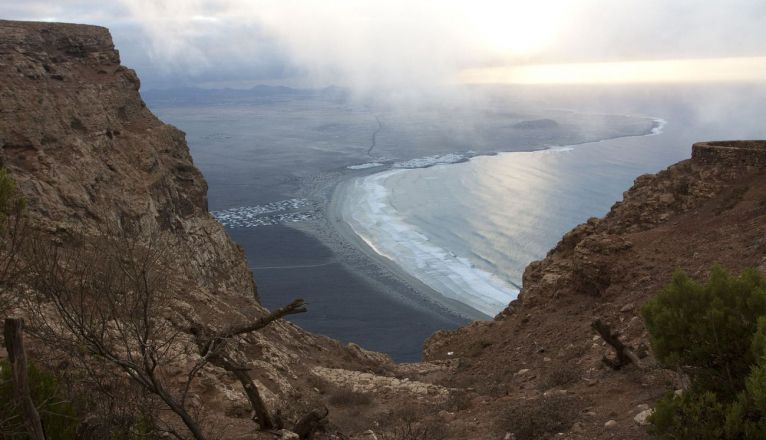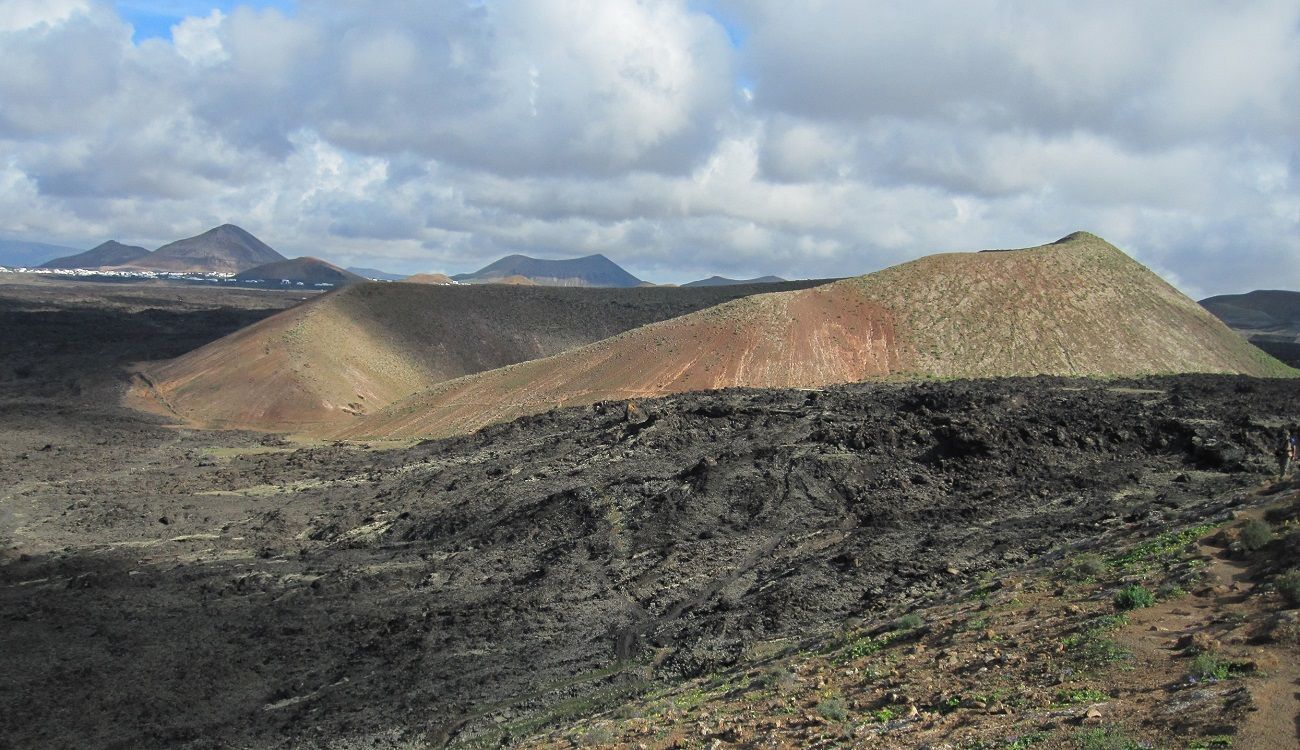Hiking trails are a good way to get to know the island of Lanzarote, where you will discover secret beaches, volcanoes with a long history and numerous landscapes that will take your breath away, all while being in full contact with nature.
Although Lanzarote has a large network of trails that extends throughout its geography, here are some of the most spectacular, although not suitable for everyone, as many require good physical condition.
1. Caldera Blanca and La Caldereta
With a height of more than 450 meters and a crater of 1,200 meters in diameter, one of the most impressive volcanoes on the island is Caldera Blanca, located in the municipality of Tinajo.
The route to visit it consists of about 10 kilometers, and can be done in about four hours. The starting point is a car park located on a dirt road called “Camino del Cráter”, near Ermita de los Dolores.
From there you will start a path of just over 1 kilometer (about 25 minutes) zigzagging through a solidified sea of lava, until you reach La Caldereta, another smaller volcano. Once passed, and following the path, you will end up reaching the base of the famous Caldera.
The ascent does not imply much technical difficulty and from the heights you will be able to observe the contrast of the white of the volcano with the black of the sea of lava, as well as its immense crater. Up to this point, it is a relatively easy route that does not require a great physical condition.
However, for those more adventurous who wish to see the Timanfaya National Park, they can go around the crater to the left until they reach the highest point of the volcano.
It is important to mention that you have to be cautious during that part of the route, since strong winds can make the climb difficult. For this reason, it is always recommended to go up when the weather is good and secure your footing well, without rushing.
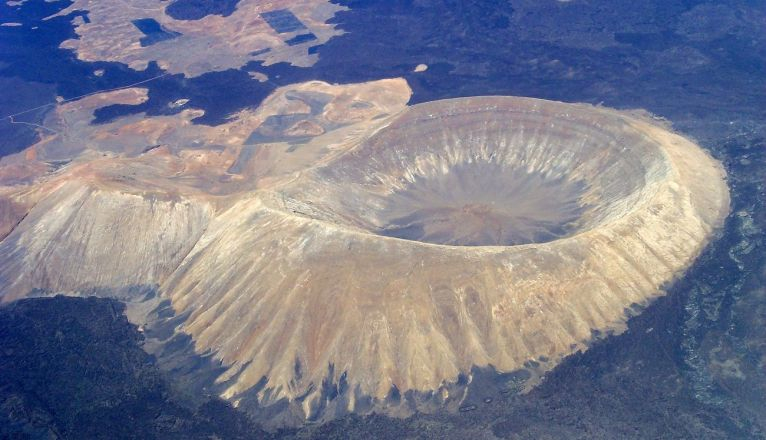
2. Path of the Gracioseros
The Path of the Gracioseros, better known as the "descent from the Risco" is one of the most incredible routes in Lanzarote, since it consists of descending the Risco de Famara until you reach one of the most secluded and quiet beaches on the island.
To locate the point of descent, you will have to go to the town of Ye and get to the Hotel Rural Finca La Corona. To the left you will see a paved path where you can leave the car and start the descent.
It takes about 45 minutes of descent with medium difficulty, due to the slopes of more than 400 meters and numerous stones across the path, so it is essential to do it with appropriate shoes. The return is more complicated and takes more than sixty minutes. It is not recommended to do it with small children or elderly people who are not in good physical shape.
Along the way, you can enjoy incredible views of the Chinijo archipelago, especially the island of La Graciosa. After the descent, you will find a virgin beach of 500 meters of sand, with turquoise waters and generally calm, perfect to spend the day.
Remember to bring enough water and food, as well as a well-charged mobile phone, since when you reach the beach you will not find any type of service.
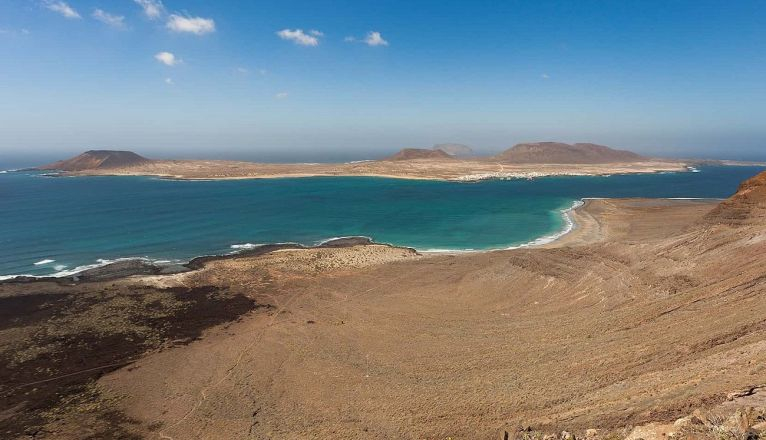
3. Ascent to Montaña Colorada
In front of El Cuervo volcano, in Tinajo, you can find Montaña Colorada, another volcano that owes its name to its reddish tones, a consequence of the presence of iron oxides in the composition of the lava. It should be noted that this volcano was one of the latest to form during the period of eruptions.
This circular route "to planet Mars" begins with a path that ascends transversely. It is important to mention that this is a somewhat complex route, with 465 meters of slopes, where the ground also tends to have the occasional loose stone, slowing down the climb.
Therefore, it is recommended to go up with caution and at a slow pace, to guarantee good footing and avoid slipping.
Once at the top, you can walk around the crater and enjoy the incredible views of Timanfaya National Park and El Cuervo volcano.
To descend use the same path and then skirt the perimeter of the mountain and learn about its volcanic activity through the information panels.
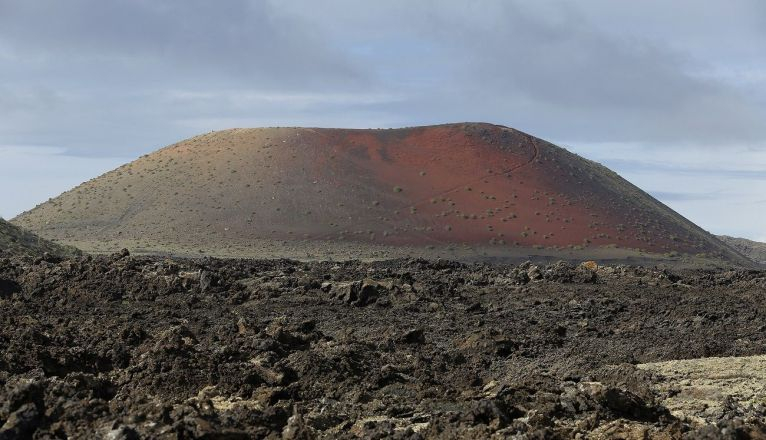
4. Route from Femés to Playa Quemada
The route, about 8.3 kilometers long, goes from the town of Femés to Playa Quemada, in the south, is a path that offers spectacular views of the Atlantic Ocean and Los Ajaches Natural reserve.
It takes approximately two hours down to the coast, and it is considered of medium difficulty, since although most of the time it is relatively easy thanks to the good condition of the road, the beginning is somewhat complicated.
The path begins at the top of the Pico del Filo, near the Church of Femés, with a narrow descent along a goat track, bordering the Barranco de la Higuera. After the first few kilometers you will begin to see the sea and more specifically a small black sand beach called El Pozo, with calm waters and complete solitude, due to the difficulty of reaching it.
After resting for a while and refreshing yourself with a swim, the route continues along a zigzag path that will take you to the famous black sand beach of La Arena, followed by the rocky beach of Playa Quemada.
Once in Playa Quemada, you can take the opportunity to eat fish or seafood in one of its three restaurants and put the finishing touch to the route.
As it is a linear path, you will have two options to return to the starting point, either make the return route along the same path and travel another eight kilometers or make the route with two cars, leaving one below in Playa Quemada and the other in Femés.
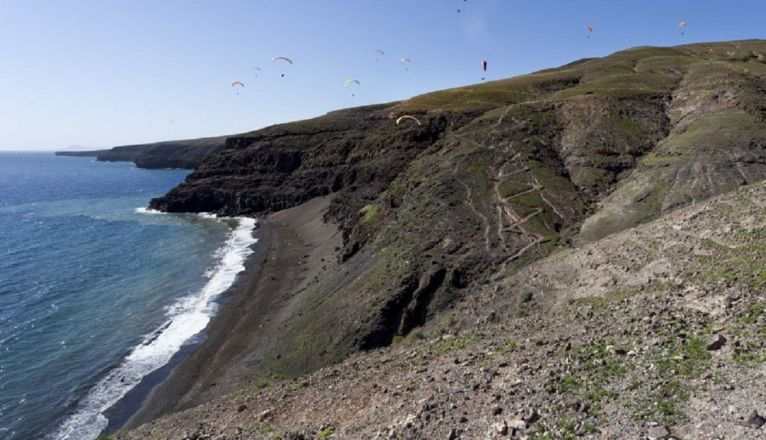
5. Path from the town of Teguise to Famara Beach
It is a circular route of about 22 kilometers of medium difficulty that crosses the Risco de Famara, in the north of the island.
The starting point is the urbanization of Los Noruegos, in Caleta de Famara, there you will find the marked trail. The first part, which runs through the Barranco de la Poceta, is quite simple and becomes more difficult as you go up, although there is no need to climb.
Along the way, you will be able to see some deposits for the extraction of water that give the ravine its name. Once at the top, you will find yourself in Las Peñas del Chache, the highest point in Lanzarote, at more than 600 meters high.
After skirting the Risco through the Las Nieves viewpoint, you will reach the Ermita de las Nieves, where you can take the opportunity to rest, and then continue to the Pico de Marmajo. This part is very easy, since it is the path that many residents of Teguise take to get to this small church.
From the peak, a somewhat more complicated descent begins due to the small loose stones on the way, passing through Lomo de La Casa, Morro Alto and Las Laderas, until reaching Los Noruegos, the starting point.
Due to the its difficulty and duration, about four and a half hours, it is not recommended to do it alone and requires being in good physical condition.
